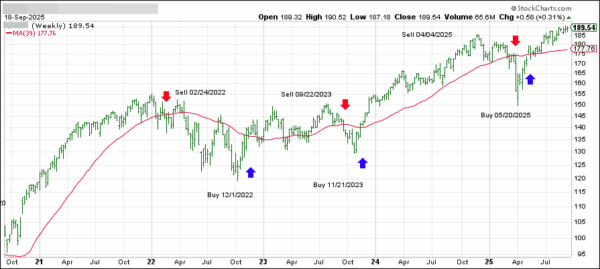Do you want to know which ETFs are hot and which ones are not? Then you need my High-Volume ETF Cutline report. It tells you how close or far each of the 311 ETFs I follow is from its long-term trend line (39-week SMA). These are the ETFs that trade more than $5 million a day, so they are not some obscure funds that nobody cares about.
The report is split into two parts: The winners that are above their trend line (%M/A), and the losers that are below it. The yellow line is the line of shame that separates them. You can see how many ETFs are in each group and how they have changed since the last report (295 vs. 287 current).
Take a peek:
The HV ETF Master Cutline Report
If you are confused by some of the terms we use, don’t panic. I have a helpful Glossary of Terms for you.
If you want to learn more about the Cutline method and how it can make you rich (or at least less poor), read my original post here.






